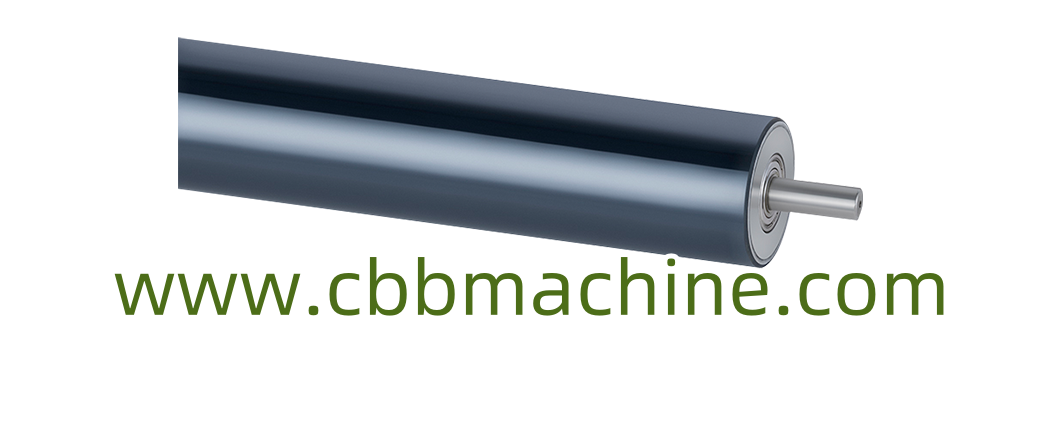Understanding the Magnetic Powder Brake: A Key Component in Industrial Machinery
In the world of industrial machinery, efficiency, safety, and precision are paramount. Every component in a machine plays a vital role in ensuring the system operates smoothly. One such component is the Magnetic Powder Brake. This crucial element, while often overlooked, serves a variety of functions that enhance the performance of a wide range of industrial applications. In this post, we’ll dive deep into what a magnetic powder brake is, how it works, and why it's indispensable in modern machinery.
What is a Magnetic Powder Brake ?
A Magnetic Powder Brake is a type of device used to control the speed or torque of rotating machinery, especially in high-performance industrial systems. It is made up of a combination of magnetic fields and powder materials that allow precise control over the rotational speed. Typically, this brake system is used in applications where accurate and responsive control of rotational forces is required, such as in tension control systems, printing presses, and winding or unwinding machines.
This brake operates by using magnetic fields to induce torque within a specific area filled with magnetic powder. When the brake is engaged, the magnetic powder becomes magnetized and forms a resistive layer that creates friction. The intensity of the magnetic field determines the amount of braking force applied, which makes the system highly adaptable for various tasks.
How Does a Magnetic Powder Brake Work?
At its core, the operation of a Magnetic Powder Brake is based on simple electromagnetic principles. The brake consists of a rotor, a stator, and a housing that contains the magnetic powder. The rotor is connected to the machinery that needs to be controlled, and the stator is connected to the power source.
When the power is applied to the stator, it generates a magnetic field that magnetizes the powder within the housing. The powder, which is typically composed of fine iron particles, then forms a dense, frictional barrier between the rotor and stator. The strength of the magnetic field controls the level of friction, and consequently, the amount of braking force applied.
This frictional interaction between the rotor and the stator allows the Magnetic Powder Brake to precisely control the speed and torque of the machine, providing smooth and reliable operation. The system is highly responsive, ensuring that even small adjustments can be made with ease.
Applications of the Magnetic Powder Brake
The versatility of the Magnetic Powder Brake makes it ideal for a variety of applications across multiple industries. Let’s explore some of the most common uses:
Tension Control Systems: In industries such as textiles, paper, and packaging, tension control is critical for ensuring the smooth operation of winding and unwinding processes. The Magnetic Powder Brake is used to control the tension in these systems, maintaining consistent pressure and preventing damage to the material being processed.
Printing Presses: In printing, precise control over the speed of rollers is essential for achieving high-quality prints. Magnetic powder brakes are used to regulate the rotation speed of the rollers, ensuring that the paper moves at the correct speed for accurate printing.
Conveyor Systems: In material handling, conveyors often need to be stopped or slowed down quickly. The Magnetic Powder Brake can be used to modulate the speed and stop the conveyor in a controlled manner, preventing damage to both the materials and the machinery.
Machine Tools: In precision machining, such as CNC operations, the magnetic powder brake is used to ensure that the spindle or other rotating parts maintain a constant speed. This helps to avoid fluctuations that could affect the quality of the final product.
Robotics: In robotic systems, particularly those that require precise and smooth movements, the Magnetic Powder Brake can be used to control the speed of motors and ensure accurate motion control.
Advantages of the Magnetic Powder Brake
Precision Control: One of the primary benefits of a magnetic powder brake is its ability to offer highly precise control over speed and torque. Unlike traditional mechanical brakes, which rely on frictional contact, magnetic powder brakes can provide smooth, variable braking without the need for physical contact.
Minimal Wear and Tear: Since there is no physical contact between the brake and the machine components, the wear and tear are significantly reduced. This leads to a longer lifespan for both the brake and the machinery it controls.
Adaptability: Magnetic powder brakes can be easily adjusted to suit different applications and can handle a wide range of forces and speeds. This makes them suitable for both light and heavy-duty industrial tasks.
Silent Operation: Unlike mechanical braking systems that can generate noise, magnetic powder brakes operate quietly, contributing to a more peaceful and productive work environment.
Low Maintenance: The absence of moving parts that make direct contact reduces the likelihood of mechanical failure, resulting in lower maintenance needs.
Conclusion
The Magnetic Powder Brake is a critical component in modern industrial machinery, offering precise control, reduced wear, and versatility across various applications. From tension control in textile and packaging industries to precision machining in CNC systems, this brake plays a vital role in improving the efficiency and longevity of machines. Its silent operation, minimal maintenance, and precise control make it a valuable choice for industrial machinery applications.
If you’re interested in learning more about Magnetic Powder Brakes and how they can enhance the performance of your machinery, visit CBBMachine for more information.

